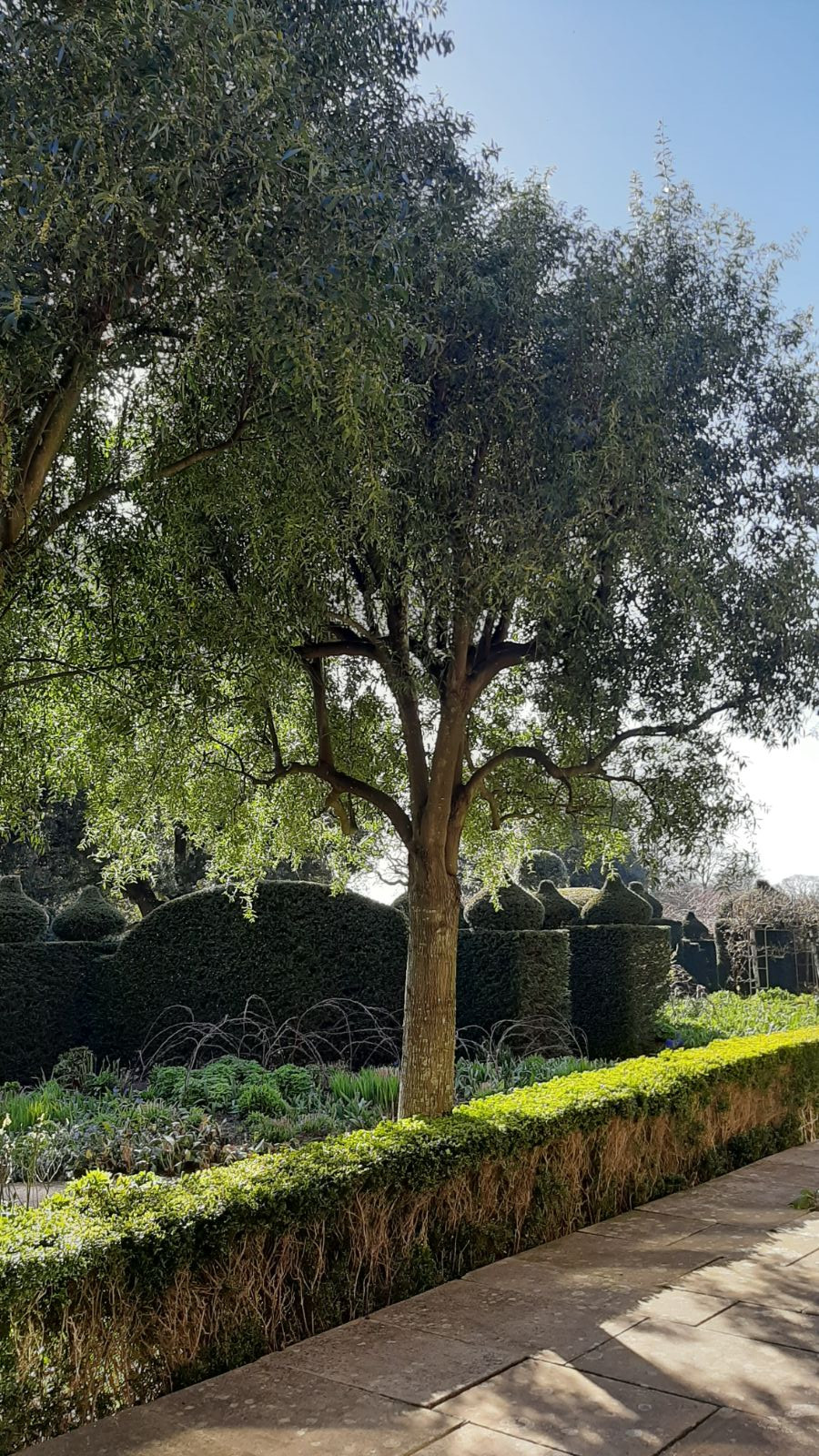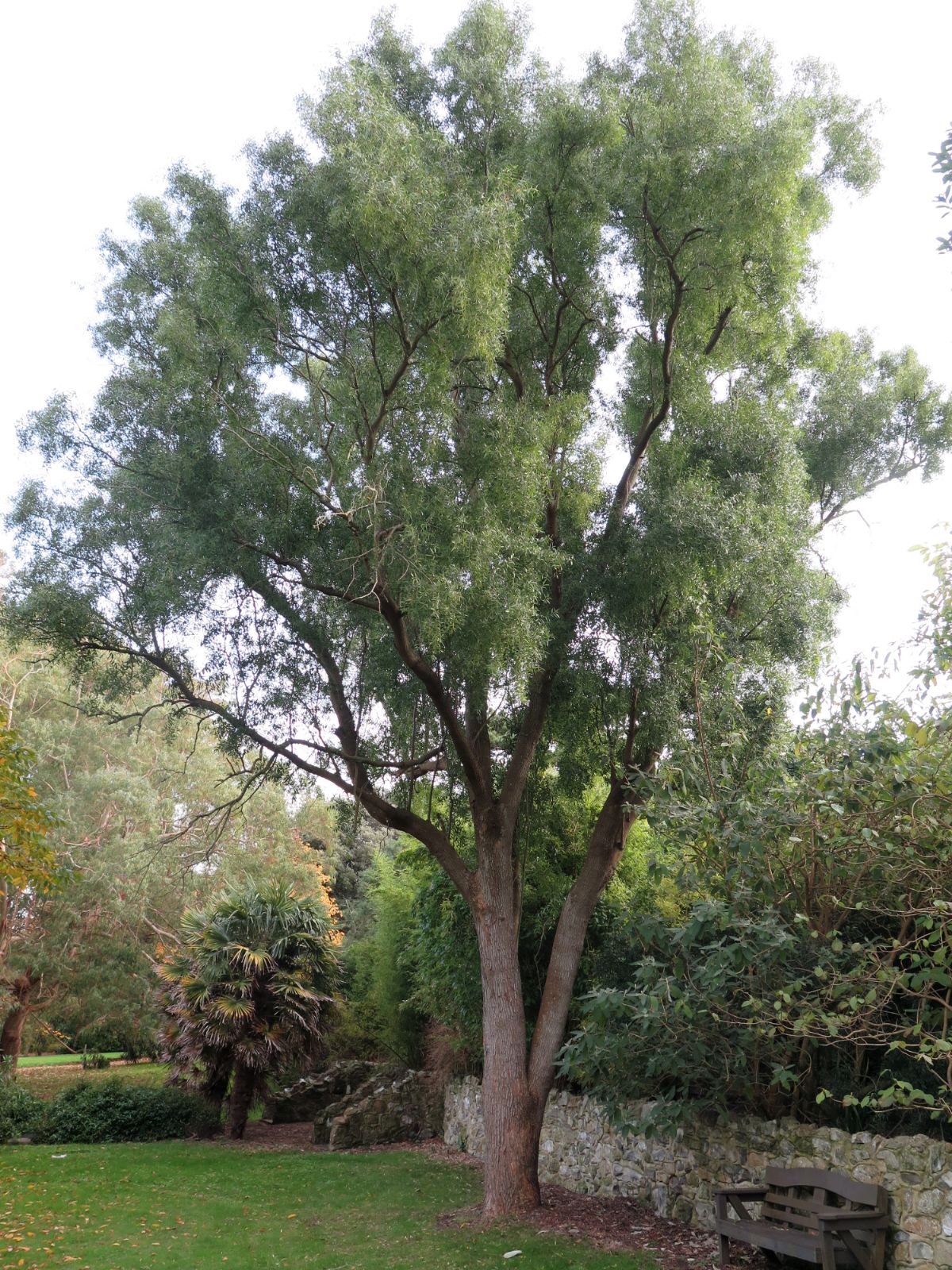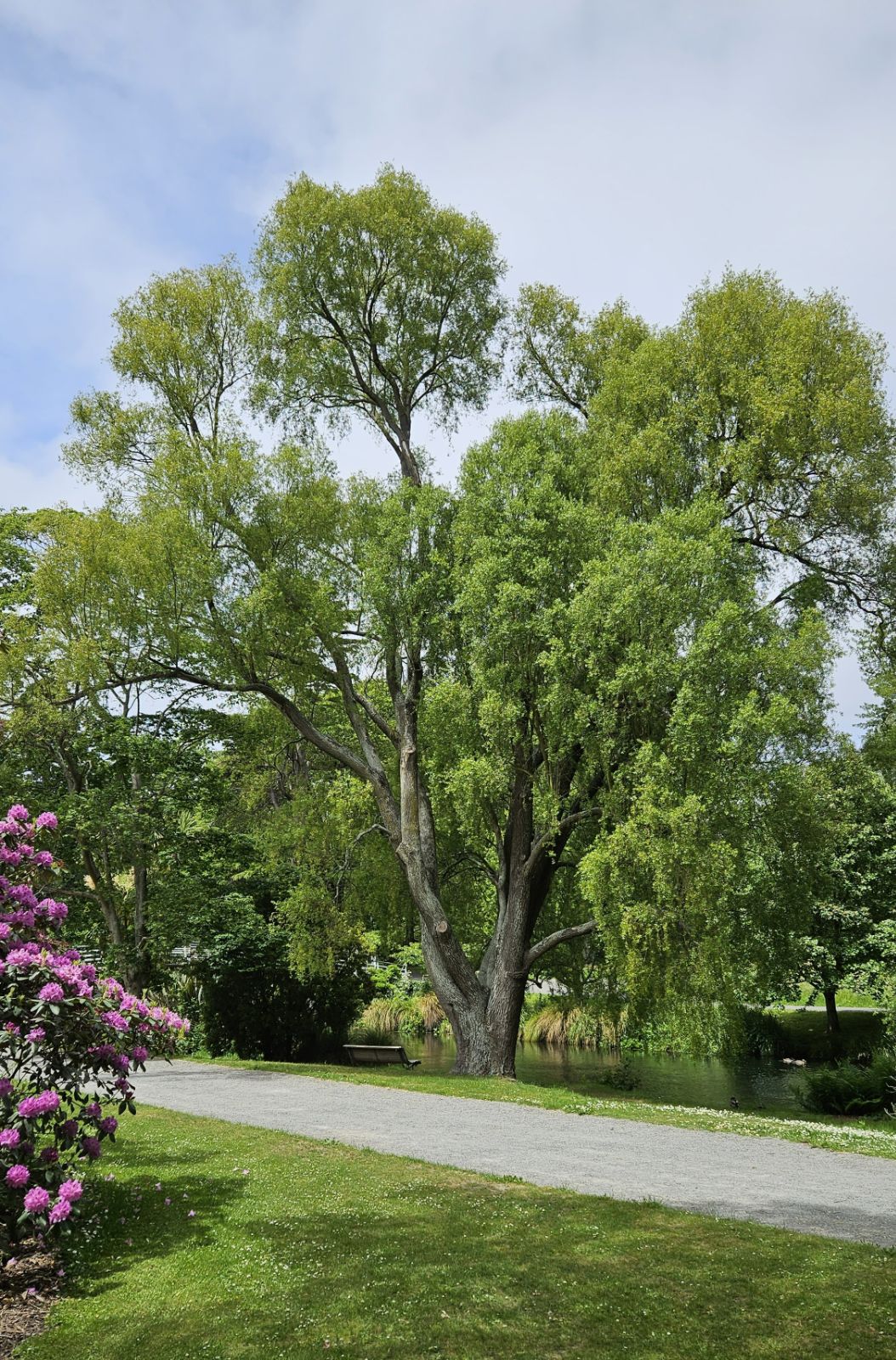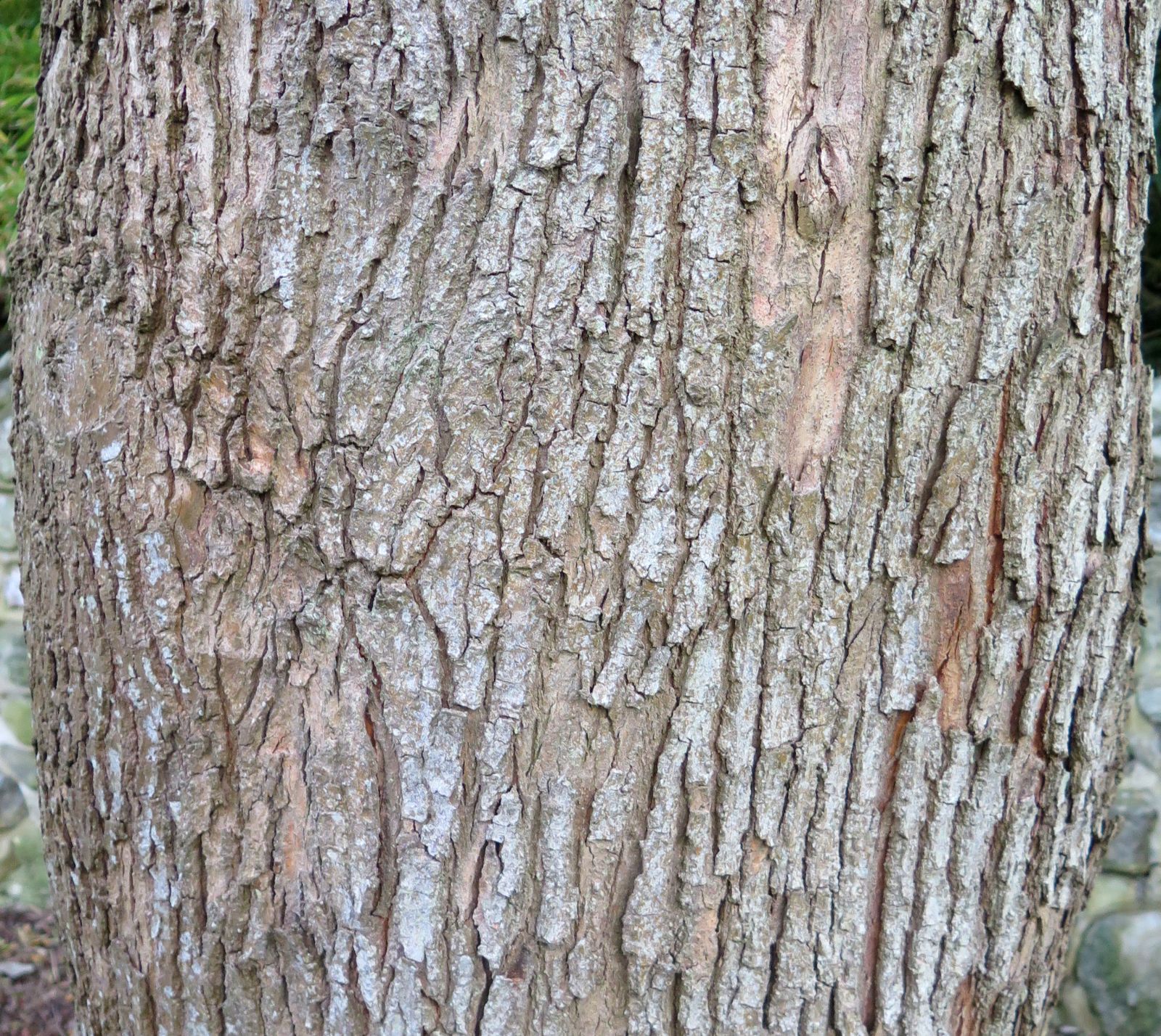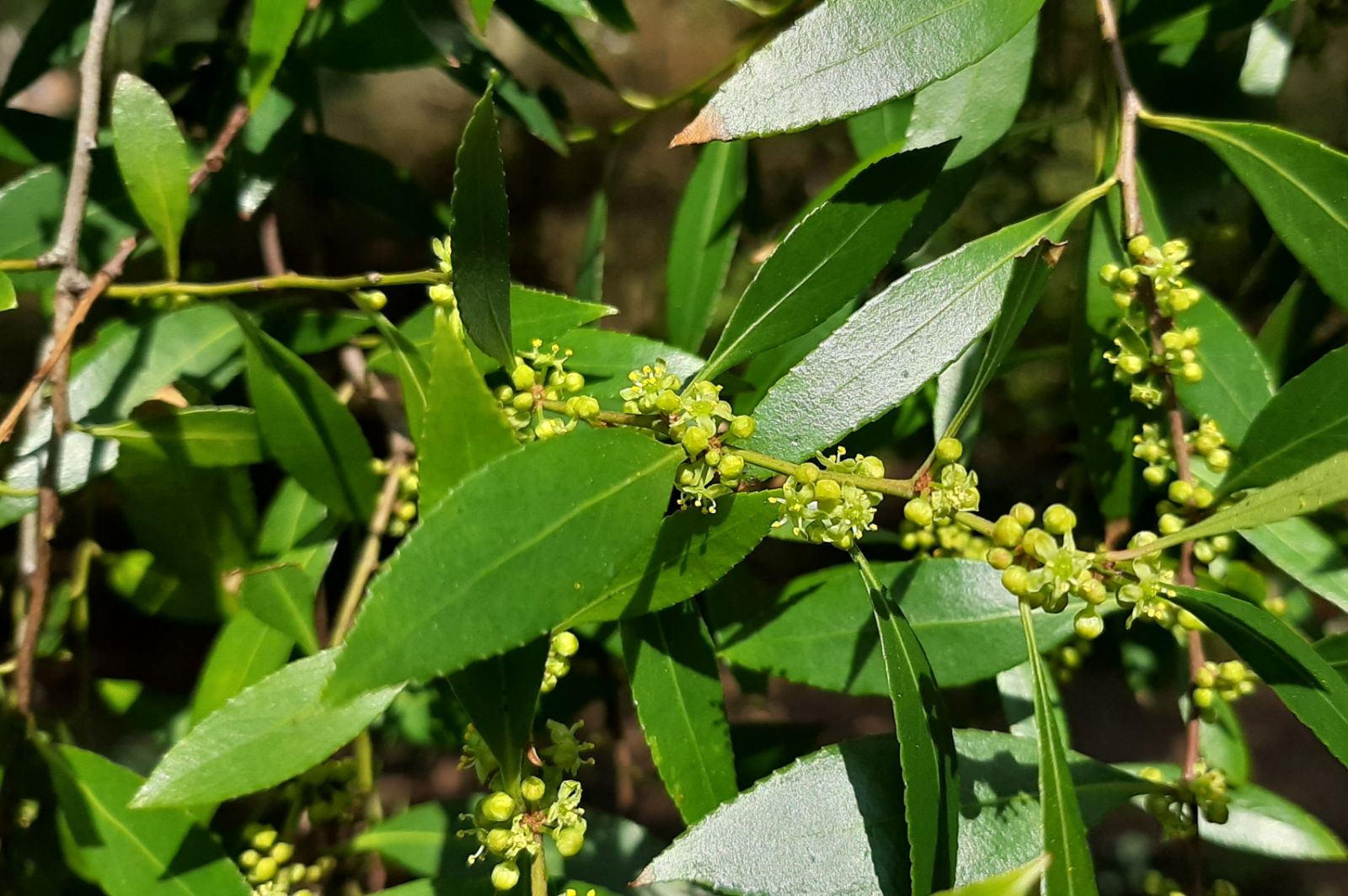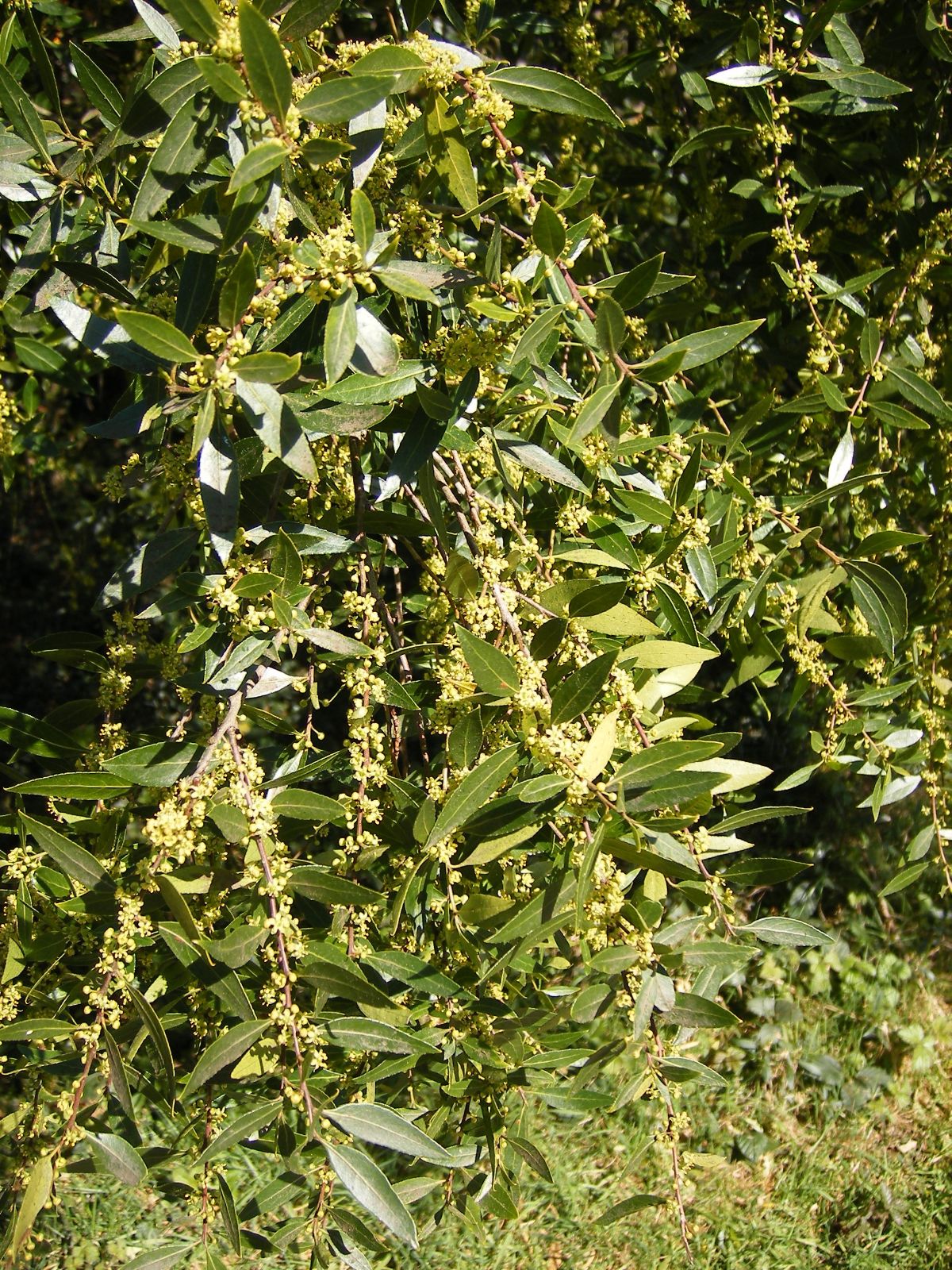Maytenus boaria
Credits
Article from Bean's Trees and Shrubs Hardy in the British Isles
Recommended citation
'Maytenus boaria' from the website Trees and Shrubs Online (treesandshrubsonline.
An evergreen tree up to 70 ft high with slender, drooping branchlets, but sometimes shrubby; glabrous in all its parts. Leaves lanceolate or narrowly ovate to narrowly elliptic, tapered at both ends, 1 to 2 in. long, 1⁄4 to 3⁄4 in. wide, medium green above, paler beneath, closely and finely saw-toothed; leaf-stalks slender, very short, scarcely differentiated from the narrowed base of the blade. Flowers greenish-white, small and inconspicuous, borne in clusters of commonly two to five in the leaf-axils of the previous year’s growth, mostly unisexual but both sexes borne on the same plant. Fruits capsular, the size of a pea, with two seeds, each enclosed in a red aril.
A native of Chile from Coquimbo province to about 42° S.; and of Argentina, where it is perhaps more numerous than in Chile and extends along the eastern side of the Andes from S. Neuquen to Chubut province; also of Peru, Bolivia, and Brazil; introduced in 1829, though the present stock in Britain probably derives from seeds collected in Chile by H. F. Comber and by Clarence Elliott in the mid-1920s. It is rare in cultivation, but there is a specimen measuring 30 × 21⁄2 ft at Wakehurst Place, Sussex (1968), and a smaller one at Highdown, near Worthing, growing on chalk. Bushy plants are quite hardy at Jermyns House, near Romsey, Hants, and bear fruit. At Lanarth in Cornwall it has produced self-sown seedlings.
The maiten is an interesting evergreen and as a tree makes an elegant specimen with an oval crown and drooping branches. It is a beautiful feature of pasture-lands in the lower Andean valley of Central Chile and is a light-loving species, not found in the temperate rain-forest. It has a considerable geographical range and so is likely to vary in hardiness; trees from seeds collected in Argentina might prove hardy even in inland districts.
Cattle have a great liking for the leaves of the maiten, so much so that, according to Molina, who described the species in 1782, they will look at no other forage when these are within reach. Hence the specific epithet boaria, meaning of or for cattle.
From the Supplement (Vol. V)
SPECIMENS: Wakehurst Place, Sussex, 36 × 31⁄2 ft (1984) and another 20 × 11⁄2 ft (1980); Nymans, Sussex, Wild Garden, 36 × 31⁄4 ft (1985); Hillier Arboretum, Ampfield, Hants, 27 × 31⁄4 ft at 1 ft (1984); Tortworth, Glos., 41 × 21⁄2 ft (1980); Edinburgh Botanic Garden, 25 × 3 ft (1985); National Botanic Garden, Glasnevin, Eire, 44 × 71⁄4 ft (1975).
† M. Magellanica – As noted in later impressions of this edition, this species is figured in Bot. Mag., n.s., t.668, from a plant at Wakehurst Place. This is a propagation from the late Collingwood Ingram’s plant at Benenden Grange, Kent, which died from drought in 1971. The Benenden clone also grows in the R.H.S. Garden at Wisley.
M magellanica (Lam.) Hook. f.
Synonyms
Cassine magellanica Lam

